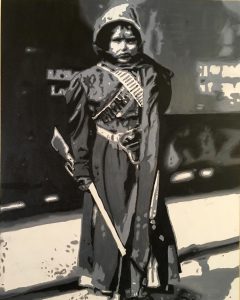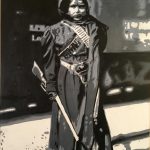re: Against Modernity (source unknown)
Thanks for your question!
The historical context is from the Mexican Revolution (about 1910-20). The Porfirio Diaz 7-term presidency from 1876-1911 (dictatorship) favored foreign investment and markets over native autonomy, the driving force seemed to be the appeasement of foreign markets through commodification of natural resources and who controlled those resources in order to gain prosperity at the cost of a cheap and exploitative labor force.
Mexico underwent revolution in order to remove this dictatorial administration that favored foreign investment and trade. This inclination to enter the global economy to rise to prominence left Mexico precariously dependent on the whims of overseas demand. The expanding global competition meant that more exports needed to be made and be competitively priced. This led to the aggressive acquisition of land from rural communities in order to create more cash crops. Cheap labor by peasants maximized profits for the wealthy elite. Often this work force would labor on land they once owned leading to obvious tensions in the southern parts of Mexico. In the north, laborers such as mine workers were abused and paid less than their foreign counterparts. These tensions manifested into a bloody revolution. In the end, proper and just land reform was never attained, the new government did monopolize the natural resources eventually, yet the country remains deeply divided by class and income disparity.
The transformation of land into commodity through free or inexpensive labor in order to satisfy a globalized economy gave the ruling elite avaricious ambitions for wealth. Porfirio Diaz’ dictatorship planted so many cash crops that people couldn’t even grow their own food on land that they no longer owned. This dependency on export secured Mexico’s role on the world stage. Vast amounts of natural wealth lay within Mexico's borders- yet remained incredibly poor.
Many of these issues could also be said of Mexico currently as well and this history is one that is familiar to many other countries of the Global South. I think your read is interesting and spot on in terms of the conflict between modernity and tradition. This notion of Modernity as progress is one that contains a dark underside of exploitation and abuse that I feel like my art grapples with in one way or another.

